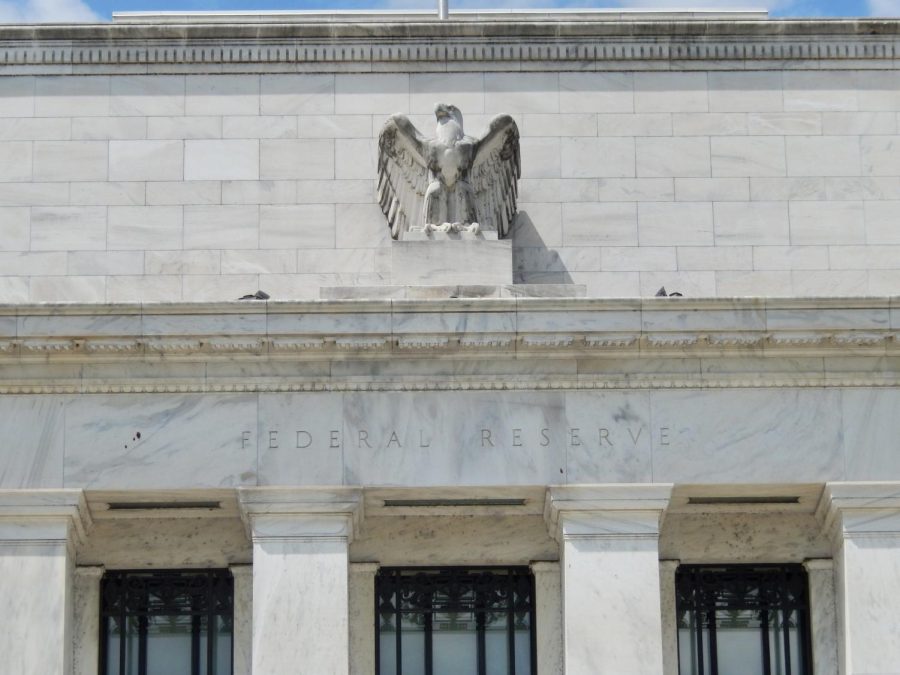Banks fall, but Federal Reserve raises interest rates again
April 3, 2023
The Federal Reserve announced an increase in the benchmark interest rate by 25 basis points after its meeting on March 22.
Following the central bank’s ninth consecutive rate hike, the rate is now set between 4.75% and 5%. The Fed made the decision in hopes it will mitigate the U.S. economy’s recent problems with high inflation rates.
Despite the erratic financial environment, which has been exacerbated by the recent failure of significant banks, the Fed chose to maintain its combative posture by raising interest rates once more.
With the current market volatility and the persistent worries about the state of the banking system, many analysts anticipated that the Fed would ease its stance.
The Fed’s latest statement, however, made clear that its members think additional policy firming may be required to address concerns that stem from inflation.
“We are committed to restoring price stability and all of the evidence says that the public has confidence that we will do so,” Powell said during a post-meeting news conference. “That will bring inflation down to 2% over time. It is important that we sustain that confidence with our actions, as well as our words.”
Despite the recent failure of banks, the public was reassured by the Fed’s assertion that the U.S. financial system is solid and robust.
Initially, the market rose and investors felt positive about the central bank’s decision, as the Treasury yields and the U.S. dollar fell.
But that did not last long as stocks fell shortly after the announcement, with all three major indexes declining.
This reflected hesitancy among investors, as they opted for safer options, such as gold and oil.
The day prior, U.S. Treasury Secretary Janet Yellen testified before the Senate to calm the financial market, saying that the government will do its best to guarantee depositors’ savings and that the banking system remains safe.
The Fed has kept a close eye on the banking crisis and took action in the past month to ensure the financial system is secure and stable.
The central bank predicted unemployment to rise to 4.5% by the end of March. This number can translate to more than 1 million Americans losing their jobs, which is not a great outlook for the labor market.
The Fed’s decision to raise interest rates and maintain its combative approach is a testament to its dedication to upholding price stability and fostering long-term economic growth.
Although some may disagree with the choice, members of the Fed’s governing board thought it was essential to handle the current inflation problems and protect the general health of the economy.
“The Committee anticipates that some additional policy firming may be appropriate,” the Fed said in a statement.
The latest increase neglected to adhere to the 50-basis-point hike that Powell hinted at after testifying before Congress.
The change in the Fed’s sentiments resulted from the closures of SVB Financial Group and Signature Bank, as well as capital issues at Credit Suisse Group AG and First Republic Bank, which have raised concerns about the strength of the financial market.
“I think the Fed did take the path of least resistance here, hiking but also providing a relatively dovish outlook on rates over the year ahead,” Karl Schamotta, chief marketing strategist at Corpay One Inc., told Reuters. “That essentially gives markets what they were looking for.”
Powell hinted that this might be the last increase, especially because of the confidence crisis in banks. He added that because of such circumstances, there will be tighter credit conditions. Due to this reason, the Fed softened the hike.
Consequently, the economy is expected to slow down, but Powell said that the banking system is “sound and resilient.”
Soft landing is still a possibility, but the Fed’s priority is to restore price stability and sustain public confidence in the financial system.
Investors appear to be cautiously optimistic about the outlook, but uncertainty surrounding how the economy and the banking industry will fare in the coming months remains.








